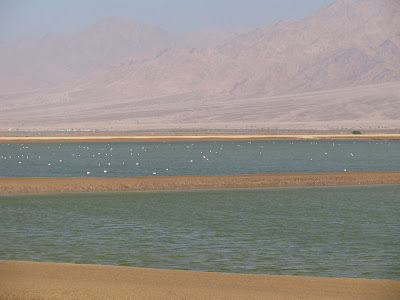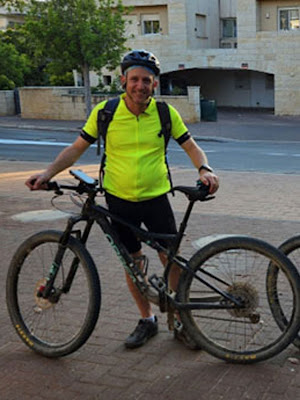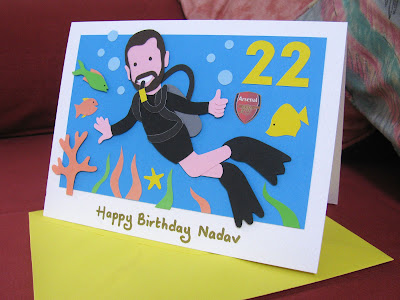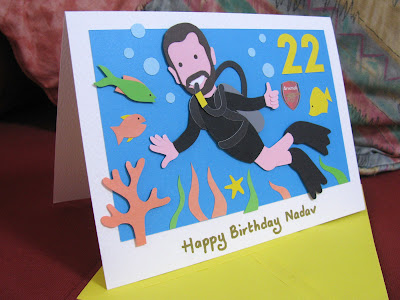Photo credit: Eilat Birding Center - IBRCE
Eilat's salt pools are an industrial site for the production of salt for both
the domestic and international market. The
Salt of the Earth salt plant
uses the pools, which cover a total area of around 180 hectares (440 acres), to
extract Red Sea salt from the sea water by evaporation. An experimental solar
evaporation salt production plant was already operating in Eilat between the
years 1954-1959 and the current plant was set up in 1976. Over the years, the
plant's manufacturing processes became more sophisticated, doubling and even
tripling the plant's production and processing output. During the early years,
when the pools operated only with water sourced directly from the sea, annual
production reached about 150,000 tons. Salt harvest progressed from collection
by tractors and carts to laser-guided equipment used today that preserves salt
purity and prevents damage to pool infrastructure. Over time, new processing
and drying equipment was added, improving the salt quality to superior levels.
The salt pools serve as a very special haven for flamingos since they are
loaded with algae as a result of the evaporation. The flamingos feed on the
algae, which are rich in beta-carotene, which causes the pink colouration in
the flamingos' wings.
The first few years after the salt company built the ponds, only 10s of
flamingoes came in the autumn and left in the spring. In the mid-1990s a
change was observed. Adults that wintered in Eilat between September and March
brought their young and after the adults left for the subsequent breeding
season in March, the young, which can be identified by their black and white
plumage, stayed back for the summer.
There are several observation posts overlooking the salt pools and the
flamingos. The one we visited, after a short bumpy ride off-road, allowed us
wonderful views of the jagged peaks of the Edom mountains in Jordan and of
Israel's Mount Amram, which is notable for its dark colour. Opposite us was
Jordan's Aqaba International Airport, above. A peace agreement in 1996 between
Israel and Jordan included arrangements for Israel to use the runways and for
passengers to proceed from their aircraft directly into Israeli territory.
The salt pools are constantly under threat. In 2020 a plan to build a
visitor centre for marine and ancient agriculture with a large campsite for
750 people, on the shores of the pools, was put forward for approval.
Because the pools are an industrial site for the production of salt and not
a nature reserve, protecting the birds and habitat is a constant fight.
In addition, visitors using drones to film flying flamingos and ATVs racing through the habitat in the past has scared the birds away. The flamingoes leave for the day to a protected but foodless site and only come back to feed at the pools when the crowds leave. Signs now enforce against the disturbance of the birds and on the day we visited it was very quiet.
In addition, visitors using drones to film flying flamingos and ATVs racing through the habitat in the past has scared the birds away. The flamingoes leave for the day to a protected but foodless site and only come back to feed at the pools when the crowds leave. Signs now enforce against the disturbance of the birds and on the day we visited it was very quiet.
Photo credit: Tiuli
Over a thousand years ago, farmers constructed an elaborate underground water system at Evrona and turned it into Israel's savanna. The location was excellent, on the route called Darb el-Haj - Road of the Celebrants. Although it had been used by traders for millennia, after Islam was established, Darb el-Haj became the main pilgrimage trail to Mecca. Thousands of travelers from North Africa and Spain took the route every year, stopping to buy their provisions in Evrona.
The farmers, who were probably Muslims who came from the surrounding Arab countries, dug to reach fresh underground water and transport it to the fields. Every 10 meters, a shaft was dug so that air could circulate. Today you can descend a ladder down a six-meter shaft, crawl about 20 meters through the tunnel, and surface through another shaft. Apparently it's cool down there and a great way to get out of the heat!
Nearby are the "Doum Palms", a group of rare and impressive Egyptian palm trees. This is the most northerly point in the world where this species of palm trees grows. They are more commonly found in Sudan and the tropical regions of Africa and they don't grow any further north than Evrona. Unlike date palms, whose trunks are tall and straight, those of the doum palm (also known as gingerbread trees) split into V-shapes that open to the sky, with tufts of large fan-shaped leaves at the ends of the branches. Their presence here for thousands of years indicates that the weather in the past was far different than it is today.
* This post has been shared on The Hearth and Soul Link Party, Wordless Wednesday (on Tuesday), My Corner of the World and Wild Bird Wednesday.














.png)

























.jpg)






.jpg)


























